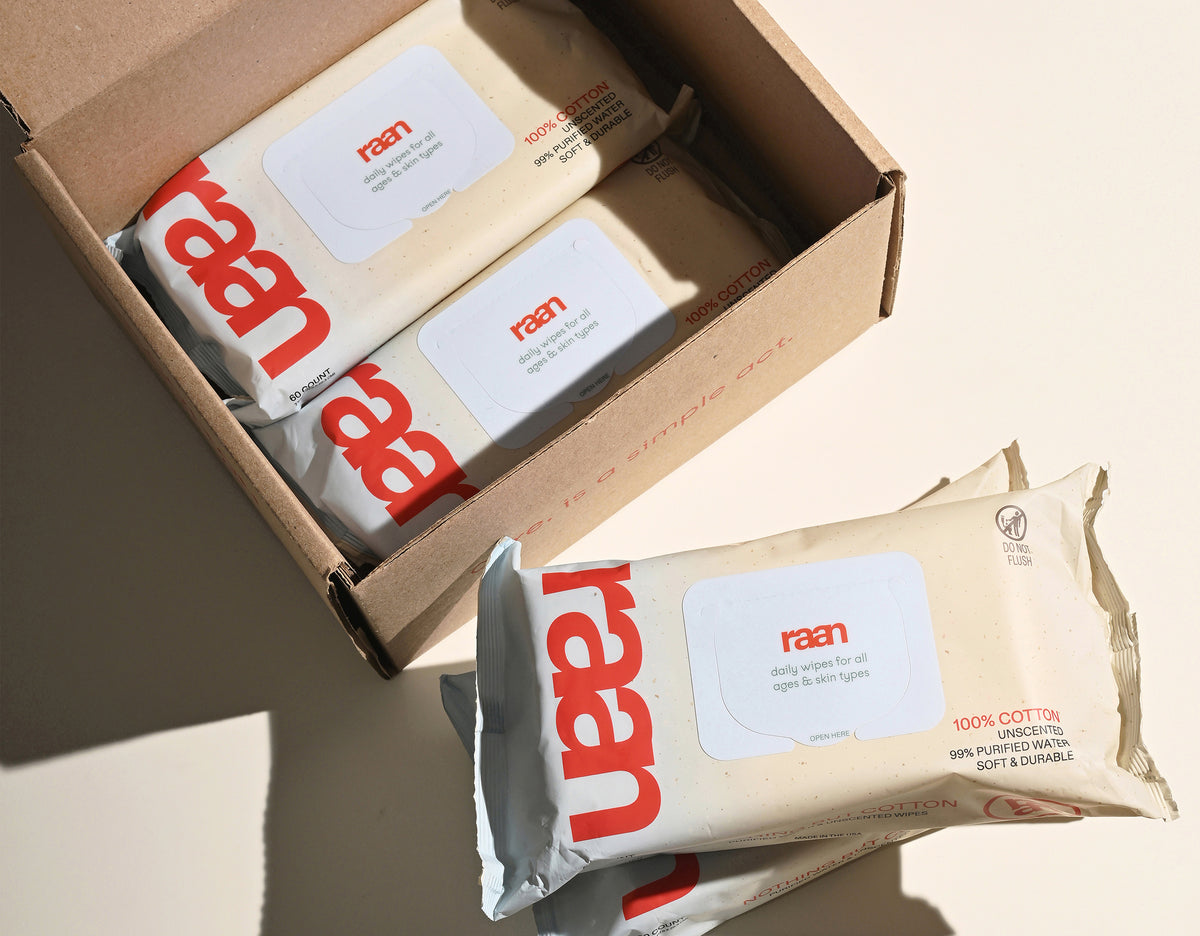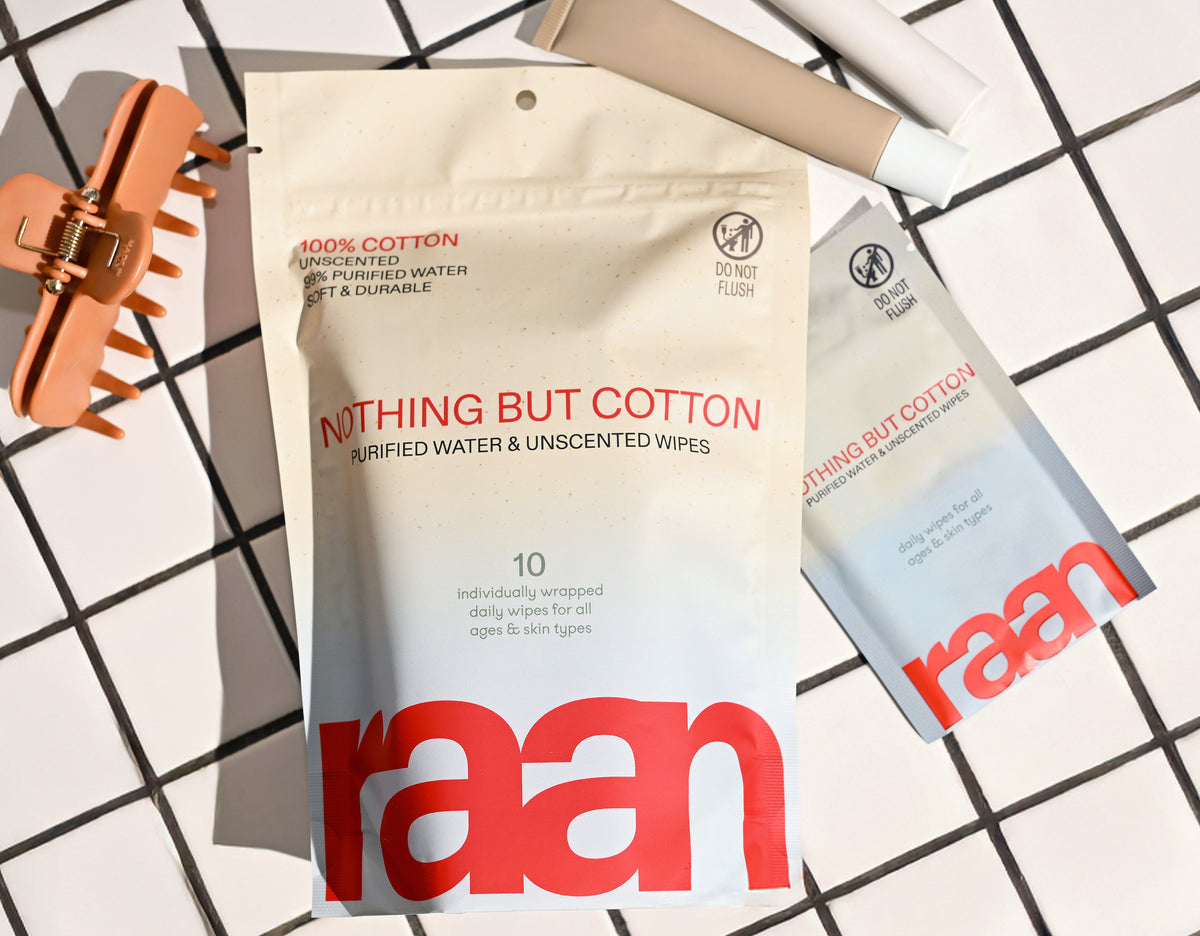Key Takeaways
- Hypoallergenic diapers are made without common allergens such as synthetic fragrances, dyes, latex, and harsh chemicals.
- These diapers are designed to reduce allergic reactions and skin irritation, especially for babies with sensitive skin or eczema.
- They avoid extras that can trigger reactions, focusing on gentle and minimal formulations.
- The term "hypoallergenic" means less likely to cause allergic reactions but is not regulated by the FDA.
- Ingredient transparency is important when choosing hypoallergenic diapers due to the lack of FDA regulation.
Table of Contents
- What Are Hypoallergenic Diapers?
- Key Materials & Ingredients in Hypoallergenic Diapers
- Hypoallergenic Diapers vs The Rest: What's the Difference?
- What Makes a Diaper Truly Hypoallergenic?
- Best Hypoallergenic Diapers of 2025, Top Brands & What Sets Them Apart
- How to Choose the Best Hypoallergenic Diaper for Your Child
What Are Hypoallergenic Diapers?
Hypoallergenic Diapers Defined
Hypoallergenic diapers strip away the extras that can trigger reactions. Unlike regular disposables packed with fragrances, dyes, and synthetic materials, these diapers focus on gentle, minimal formulations. The term "hypoallergenic" means less likely to cause allergic reactions, though it's not regulated by the FDA, making ingredient transparency crucial.
When searching for the best hypoallergenic diapers, look for brands that list every ingredient and back their claims with third-party certifications. For babies with extremely sensitive skin, using unbleached, 100% cotton baby wipes can further minimize exposure to potential irritants during diaper changes.
The distinction matters: "sensitive skin" diapers might still contain fragrances or dyes in smaller amounts, while "chemical-free" is marketing speak (everything is made of chemicals). True hypoallergenic options undergo allergen testing and eliminate known irritants entirely. If you need a convenient on-the-go solution, individually wrapped, unbleached cotton wipes are a gentle choice for sensitive skin.
How Hypoallergenic Diapers Work
Hypoallergenic diapers reduce irritation by eliminating contact sensitizers, substances that trigger immune responses on repeated exposure. Common culprits include synthetic fragrances (found in 80% of conventional diapers), chlorine bleaching residues, latex elastics, and preservatives like parabens.
These diapers often use unbleached materials, plant-based fibers, and food-grade preservatives. The absorbent core relies on proven materials like cotton or bamboo rather than synthetic polymers that can trap moisture against skin. By removing unnecessary additives, hypoallergenic diapers create a barrier that protects without provoking sensitive skin.
For parents who want a complete set of essentials for messes and sensitive skin, the mess-ready pack offers a practical bundle of gentle wipes and accessories.
Who Needs Hypoallergenic Diapers?
Babies with eczema, frequent diaper rash, or family histories of allergies benefit most from hypoallergenic options. Signs your child might need the switch: persistent redness that doesn't improve with regular changes, raised bumps around diaper edges, or reactions that worsen with specific brands.
Newborns and preemies have especially delicate skin barriers, making them prime candidates for gentler formulations. Even babies without obvious sensitivities can benefit, hypoallergenic diapers often mean fewer ingredients overall, reducing the chance of future reactions as your child's immune system develops.
Key Materials & Ingredients in Hypoallergenic Diapers

Common Materials in Hypoallergenic Diapers
The best hypoallergenic diapers prioritize natural fibers and minimal processing. Unbleached cotton forms the gentlest base, it's never treated with chlorine or optical brighteners that can irritate skin. Bamboo fiber offers natural antimicrobial properties, while organic cotton ensures no pesticide residues touch your baby's skin.
Equally important is what's missing: no synthetic fragrances, artificial dyes, phthalates, parabens, or latex. These additives serve cosmetic purposes but offer no functional benefit for absorption or comfort. Food-grade preservatives like potassium sorbate replace harsher chemicals, while plant-based adhesives eliminate formaldehyde-releasing compounds found in conventional options.
If you want to learn more about the benefits of unbleached cotton for sensitive skin, check out our in-depth guide.
Ingredient Comparison Table
| Feature | Hypoallergenic | Regular | Organic |
|---|---|---|---|
| Core Material | Unbleached cotton/bamboo | Bleached pulp + synthetics | Organic cotton |
| Preservatives | Food-grade only | Synthetic preservatives | Natural or food-grade |
| Fragrances | None | Synthetic fragrances | Essential oils or none |
| Bleaching | Unbleached or oxygen-bleached | Chlorine bleached | Oxygen or unbleached |
| Certifications | EWG, OEKO-TEX | None typically | USDA Organic |
| Cost per Diaper | $0.25-0.45 | $0.15-0.25 | $0.35-0.55 |
Certifications & What They Mean
EWG Verified certification screens for over 2,500 harmful chemicals and requires full ingredient disclosure, the gold standard for transparency. OEKO-TEX Standard 100 tests for harmful substances in textiles, ensuring materials meet strict human health criteria without relying on manufacturer claims.
Hypoallergenic Diapers vs The Rest: What's the Difference?
Hypoallergenic vs Regular Disposable Diapers
Regular disposable diapers prioritize absorbency and cost efficiency, often using synthetic fragrances, chlorine bleaching, and chemical dyes that can trigger skin reactions. Hypoallergenic versions eliminate these common irritants while maintaining comparable absorption through gentler superabsorbent polymers and unbleached materials.
The trade-off typically involves cost, hypoallergenic options run 15-30% more per diaper, but deliver measurably fewer rashes and reactions for sensitive babies. Performance-wise, both achieve similar leak protection, though hypoallergenic diapers may feel slightly less "dry" due to reduced chemical processing of the top sheet.
Hypoallergenic vs Organic Diapers
Organic diapers focus on sustainably sourced materials like organic cotton or bamboo, but organic doesn't automatically mean hypoallergenic. Some organic diapers still contain natural fragrances or plant-based preservatives that sensitive skin can react to.
True hypoallergenic diapers undergo allergen testing regardless of whether materials are organic or conventional. The best hypoallergenic diapers combine both approaches, using organically sourced, unbleached materials while eliminating all potential allergens through rigorous testing protocols.
Cloth Diapers vs Hypoallergenic Disposables
| Factor | Cloth Diapers | Hypoallergenic Disposables |
|---|---|---|
| Skin Safety | Complete control over materials | Tested for common allergens |
| Convenience | Washing, drying, prep required | Ready to use |
| Overnight Protection | May need boosters | Superior absorption |
| Travel Friendly | Bulky, washing challenges | Compact, disposable |
| Initial Cost | $200-400 upfront | $0.30-0.45 per diaper |
Eco-Friendly vs Hypoallergenic Diapers
Eco-friendly diapers emphasize biodegradable materials and sustainable manufacturing, while hypoallergenic diapers focus purely on skin safety. These categories overlap significantly, many hypoallergenic diapers use plant-based materials and minimal processing that happens to be environmentally gentler.
The distinction matters when choosing priorities. Eco-friendly options might include natural latex (a known allergen) or plant-based fragrances that sensitive babies can't tolerate. The best hypoallergenic diapers achieve both goals by using unbleached, minimally processed natural materials.
For parents interested in a starter bundle of gentle essentials, the starter set is a convenient way to try multiple products designed for sensitive skin.
What Makes a Diaper Truly Hypoallergenic?
How Diapers Are Tested for Hypoallergenicity
Legitimate hypoallergenic testing involves dermatological patch testing on human volunteers, typically 200+ participants over 48-72 hours. Labs apply diaper materials directly to skin and monitor for reactions like redness, swelling, or irritation. Additional testing screens for 26 known contact allergens including formaldehyde, nickel, and common fragrance compounds.
However, "hypoallergenic" isn't FDA-regulated for diapers, meaning brands can make claims based on minimal or self-conducted testing. Look for third-party dermatological testing certificates or clinical study references, legitimate brands readily share this documentation.
If you want to understand what "dermatologist tested" really means for baby products, read our article on dermatologist tested standards and what to look for.
Ingredient Transparency & Full Disclosure
True hypoallergenic brands provide complete ingredient lists, not just marketing highlights. Check company websites for full material breakdowns including adhesives, elastic components, and any processing chemicals. Avoid vague terms like "plant-based materials" or "natural ingredients" without specific identification.
Red-flag ingredients for sensitive skin include: synthetic fragrances (even "light" scents), chlorine dioxide bleaching residues, latex, parabens, phthalates, and dyes. Brands using these ingredients may still claim "hypoallergenic" based on low concentration levels, but elimination is safer for truly sensitive babies.
Certifications that Matter
EWG Verified certification requires complete ingredient disclosure and screens for over 4,000 harmful chemicals, the gold standard for transparency. OEKO-TEX Standard 100 tests for harmful substances in textiles, ensuring materials meet strict human health criteria without relying on manufacturer claims.
To learn more about the importance of EWG Verified certification for baby products, check out our detailed guide.
Look for certifications from independent organizations rather than internal company testing. However, even certified products have limitations, no diaper can guarantee zero reactions for every baby, and certifications don't account for individual sensitivities to otherwise safe ingredients.
Best Hypoallergenic Diapers of 2025, Top Brands & What Sets Them Apart

Our Selection Criteria
We evaluated the best hypoallergenic diapers based on complete ingredient transparency, third-party dermatological testing, EWG or OEKO-TEX certifications, and verified parent feedback on skin reactions. Each recommendation underwent rigorous assessment for material safety, absorption performance, and real-world usability across different life stages.
For a broader look at top-performing options, see our roundup of the best infant diapers for sensitive skin and newborns.
Best for Newborns
Bambo Nature Eco-Friendly - Ultra-gentle construction
Best for: Brand-new skin requiring the gentlest possible materials
Features unbleached, breathable materials with minimal processing and no added fragrances or lotions. The thin profile reduces bulk while maintaining absorption, crucial for newborn comfort and proper umbilical cord healing.
Seventh Generation Free & Clear - Clinical testing focus
Best for: Parents prioritizing dermatologist-verified safety data
Undergoes extensive patch testing and provides detailed clinical study results. Uses plant-based materials with complete ingredient disclosure and maintains consistent quality across all sizes.
Best for Sensitive Skin or Eczema
Honest Company Club Box - Minimal ingredient formula
Best for: Babies with diagnosed eczema or multiple skin sensitivities
Contains only essential absorption materials without unnecessary additives. The hypoallergenic core uses unbleached fluff pulp and eliminates all potential contact allergens while maintaining 12-hour protection.
Best Eco-Conscious Hypoallergenic Diapers
Dyper Bamboo - Sustainable materials focus
Best for: Families balancing skin safety with environmental impact
Combines bamboo fiber construction with rigorous allergen testing. The biodegradable core breaks down significantly faster than conventional options while providing comparable overnight protection.
Best Budget-Friendly Hypoallergenic Diapers
Target's Everspring - Accessible pricing
Best for: Cost-conscious families needing consistent hypoallergenic protection
Offers legitimate hypoallergenic testing at conventional diaper pricing. Available exclusively at Target stores and online, making it accessible for families transitioning from regular diapers without budget strain.
Best Overnight Hypoallergenic Diapers
Bambo Nature Overnight - Extended wear capability
Best for: Heavy wetters requiring 10-12 hour protection
Balances maximum absorption with gentle materials through advanced superabsorbent polymer distribution. Maintains skin dryness without compromising hypoallergenic standards during extended wear periods.
| Brand | Key Features | Certifications | Price Range | Best For |
|---|---|---|---|---|
| Bambo Nature | Unbleached, breathable core | OEKO-TEX, Dermatologist tested | $0.35-0.42 | Newborns, overnight |
| Seventh Generation | Plant-based, clinical studies | EWG Verified, Cruelty-free | $0.32-0.38 | Evidence-focused parents |
| Honest Company | Minimal ingredients, eczema-safe | Hypoallergenic tested | $0.31-0.37 | Sensitive skin conditions |
| Dyper | Bamboo fiber, biodegradable | OEKO-TEX, Sustainable | $0.38-0.45 | Eco-conscious families |
| Everspring | Fragrance-free, accessible | Dermatologist tested | $0.24-0.29 | Budget-conscious parents |
For additional tips on choosing gentle wipes to pair with your diaper routine, see our guide to the best wipes for sensitive skin.
How to Choose the Best Hypoallergenic Diaper for Your Child
Start with Your Baby's Needs
Switch to hypoallergenic diapers if your baby experiences persistent redness lasting more than 24 hours after diaper changes, raised bumps or welts around diaper edges, or recurring rashes despite frequent changes and proper care. Babies with diagnosed eczema, a family history of allergies, or especially delicate newborn skin are also strong candidates for hypoallergenic options.
Read the Labels & Ingredient Lists
Look for brands that disclose every ingredient, including adhesives and elastic components. Avoid vague terms like "plant-based" or "natural" without specifics. Certifications like EWG Verified or OEKO-TEX Standard 100 provide added assurance of ingredient safety and transparency.
Consider Certifications
Third-party certifications are your shortcut to ingredient transparency. EWG Verified and OEKO-TEX Standard 100 are two of the most trusted. These certifications mean the product has been screened for thousands of potential irritants and allergens, and that the brand is committed to full disclosure.
Test for Fit and Performance
Even the safest diaper needs to fit well and perform under real-life conditions. Try a small pack first to check for leaks, comfort, and skin reactions. Every baby is different, so what works for one may not work for another.
Pair with Gentle Wipes
For the most sensitive skin, pair hypoallergenic diapers with unbleached, 100% cotton wipes. This minimizes exposure to unnecessary additives and helps keep your baby's skin clean and calm during every change.
Frequently Asked Questions
What ingredients are typically avoided in hypoallergenic diapers to prevent allergic reactions?
Hypoallergenic diapers avoid synthetic fragrances, dyes, latex, chlorine bleaching residues, and harsh chemical preservatives like parabens. These ingredients are common irritants that can trigger allergic reactions or skin sensitivity in babies.
How can parents identify if their baby needs hypoallergenic diapers instead of regular ones?
Parents might consider hypoallergenic diapers if their baby shows signs of skin irritation, redness, or eczema after using regular diapers. Babies with sensitive skin or a family history of allergies often benefit from diapers formulated to minimize exposure to common allergens.
What distinguishes truly hypoallergenic diapers from those labeled as sensitive skin or chemical-free?
Truly hypoallergenic diapers eliminate known irritants entirely and often undergo allergen testing, while sensitive skin diapers may still contain small amounts of fragrances or dyes. The term chemical-free is misleading since all materials are made of chemicals; hypoallergenic focuses on reducing allergens and irritants.
Why is ingredient transparency important when choosing hypoallergenic diapers, and how can parents verify product claims?
Because "hypoallergenic" is not regulated by the FDA, ingredient transparency helps parents understand exactly what’s in the diaper and avoid hidden irritants. Parents can verify claims by looking for full ingredient lists and third-party certifications that back safety and allergen-free standards.






